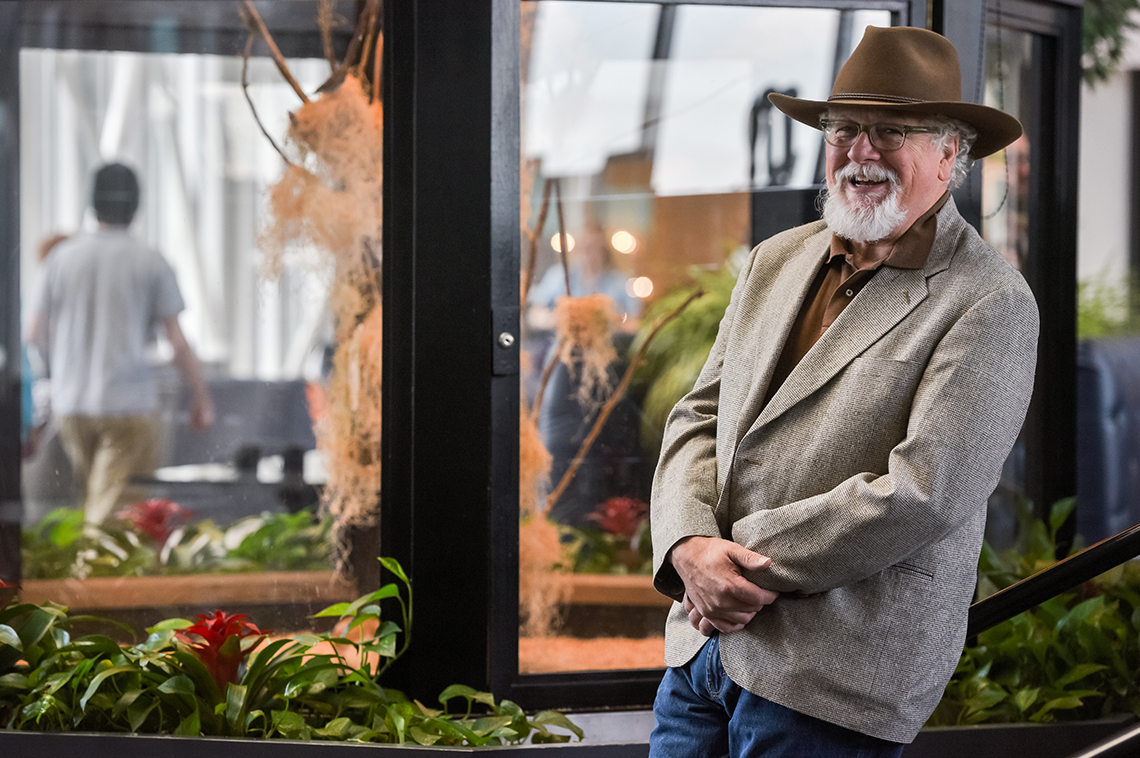
Our Humans of ArtPlace series takes its cue from the famed Humans of New York project. This month, as our blog tells stories of “the people behind creative placemaking,” we asked the driving forces behind three ingenious ArtPlace-funded projects to give us some personal insights on work, life, art, and place.
Doug Naselroad is a Master Artist-in-Residence at the Appalachian Artisan Center (AAC) in Hindman, Kentucky, where he oversees all aspects of the luthiery (stringed instrument) program. Doug has been making stringed instruments since 1969; opened Naselroad Guitars in Mt. Sterling, Kentucky, in 1979; and over the years has developed a signature line of stringed instruments and door harps that have been sold around the world. In 2013, Doug was selected as AAC’s Master Artist in woodworking, shortly before he founded the Appalachian School of Luthiery in Hindman. Doug also hosts the AAC’s monthly radio show, the Knott Downtown Radio Hour.
The AAC works with youth and adults to address the community’s opioid epidemic through workforce programs in traditional craft and music. These programs contribute to an increase in economic opportunity through the creation of jobs to meet an increasing demand for handcrafted instruments in the region.
ArtPlace: What drew you to the Appalachian Artisan Center’s Culture of Recovery project?
Doug: I was invited to come down here to build the school of luthiery about seven years ago, by the acting director at the time. One of the first people who signed up—this was before Culture of Recovery—was a young man who desperately needed something to do. He was about to start detox and rehab and wanted something to set his sights on when he got out: he wanted to make guitars. He begged me to overlook his record, and so did his wife, and we managed to pass over the background check that showed his drug felony. Since then, he’s made 60 instruments, graduated from college, and earned a degree in computer security. The individuals we serve have been so excited to have the opportunity to focus their attention away from that other thing. Literally, that’s the job: to help them have a new focus.
Fast forward to a year ago, Jessica Evans [AAC’s Executive Director] and I had finished lunch and were reviewing our proposal to ArtPlace. But it just wasn’t us—and it wasn’t ArtPlace, either. A grant writer had put it together. So we started talking about how we could best address the needs of the community with what the AAC had. We made some coffee, pondered it, and Jess said she would make some phone calls. She called up to Hickory Hill and started getting convicted that we needed to do more with people who were in recovery. She had a proposal ready to send out by close of business the next day. That’s how we do things around here: all of a sudden.
ArtPlace: Are you still hosting the Knott Downtown Radio Hour?
Doug: Yes, ma’am. We have a corner of the luthiery where we set up mics, recording equipment, etc. We broadcast on WMMT in Whitesburg. This next taping will be our 57th show. That’s a lot of shows for an all-volunteer team.
It’s kind of different from luthiery—but I’m playing a guitar I made, and I’m playing with guys I work with: The Troublesome Boys, my band. We not only work on songwriting; we also work on their instruments. Part of the Knott plan is to get people from Culture of Recovery to share their work on the show. Again, the need drives our work.
Down here, Hindman is a very special community; very small. I have a loft apartment over the studios: this is where I live during the week. The population was 777 before everyone left. I don’t think anyone actually knows how many dwell in the city limits right now. At night, after all the lawyers’ offices close, there are one or two people who live down here—and I’m one of them.
ArtPlace: In your work so far with Culture of Recovery, has a standout story emerged that you think you’ll always remember?
Doug: It’s heartwarming and heartbreaking and motivating, and in certain moments, it’s discouraging. You’re working with people who are trying to be their best, but they’re coming back from their worst. I’m getting better at it. After a while, people will open up and tell you how much it means to them to go somewhere and do something with a result they can be proud of. We’re learning how much that means to people physiologically.
The first time I was stopped in my tracks, we were building canjos—stick banjos made with a tobacco can. It’s an intro workshop. This fellow was tapping the frets into the fingerboard, which is one of the basics of luthiery. After tapping in five or six, he looked up at me with tears in his eyes and said, “Man, I don’t believe this.” I thought he’d hit his finger or something, but then he continued and said, “I’m doing something! I’m making something!” It reminds you of why they’re here. That guy’s amazement and sense of wonder that he’d actually made something.
Read more about the Appalachian Artisan Center on ArtPlace.





